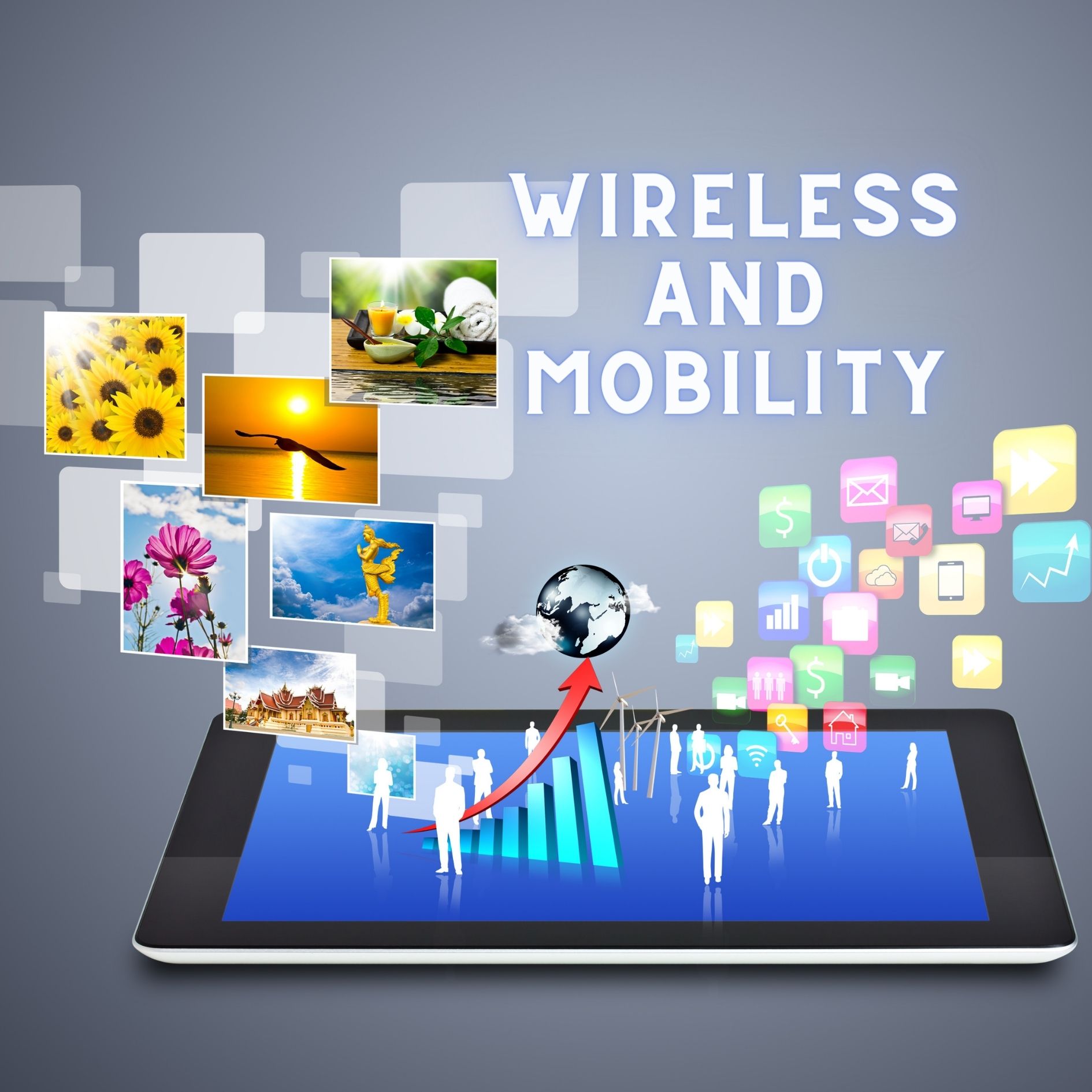Introduction
In today’s rapidly advancing digital age, wireless mobility has emerged as a transformative force, reshaping how we connect and interact with the world around us. This article delves into the evolution of wireless technology and highlights the importance of wireless mobility in everyday life and the business landscape. We will explore the advancements in wireless technology, discuss security and privacy considerations, and glimpse into the future of wireless mobility.
The Evolution of Wireless Technology
The evolution of wireless technology has been nothing short of remarkable, transforming our lives and connecting us in ways we never thought possible since its humble beginnings. From the early days of radio waves to the present-day marvels of cellular networks and satellite communications, wireless technology has revolutionized how information is transmitted and received. Wireless mobility has unlocked new possibilities, liberating us from the confines of wires and cables.
The Importance of Wireless Mobility
Wireless mobility is the key that unlocks a truly connected world. It enables us to break free from physical constraints, empowering individuals and businesses to communicate and collaborate seamlessly. With wireless mobility, we can stay connected on the go, ensuring uninterrupted access to information and services wherever possible.
Breaking Free from Physical Constraints
Gone are the days of being tethered to a desk or a telephone line. Wireless mobility liberates us from the shackles of physical boundaries, allowing us to communicate and access information from anywhere. Wireless mobility offers unparalleled freedom and flexibility, whether making a phone call while walking down the street or working remotely from a coffee shop.
Enabling Seamless Connectivity
Wireless mobility ensures we are always connected, no matter the time or place. We can access the internet, send messages, and make calls effortlessly through wireless communication technologies, such as Wi-Fi and cellular networks. This seamless connectivity has become integral to our daily lives, enabling instant communication and information sharing.
Wireless Mobility in Everyday Life
Wireless mobility has become deeply integrated into our everyday lives, transforming how we communicate, entertain ourselves, and interact with our surroundings. It has revolutionized wireless communication, allowing us to stay connected with friends, family, and colleagues regardless of distance. Moreover, wireless technology has enabled the Internet of Things (IoT) to connect various devices and create smart homes and cities.
Wireless Communication:
Wireless communication has bridged the gaps between individuals, communities, and nations. It has made long-distance communication instantaneous, facilitating global connectivity and fostering a sense of togetherness. Wireless communication has become an inseparable part of our lives, whether it’s sending a text message, making a video call, or sharing updates on social media.
Internet of Things (IoT):
The Internet of Things has paved the way for a smarter, more connected world. By leveraging wireless mobility, everyday objects can be equipped with sensors to collect and exchange data. From smart thermostats that optimize energy consumption to connected cars that enhance road safety, the IoT has the potential to revolutionize various aspects of our lives.
Smart Homes and Cities:
Wireless mobility has played a pivotal role in developing smart homes and cities. We can remotely control and monitor various aspects of our homes through interconnected devices and systems, such as lighting, security, and energy usage. In smart cities, wireless technology enables efficient management of resources, enhances public safety, and improves the overall quality of life.
Wireless Mobility in Business
Wireless mobility has also revolutionized the business landscape, empowering organizations to operate more efficiently and effectively. It has fuelled the rise of remote work and collaboration, allowing employees to connect and collaborate from different locations. This flexibility has enhanced productivity and enabled businesses to tap into a global talent pool.
Remote Work and Collaboration:
With wireless mobility, the traditional office setup has undergone a significant transformation. Employees can now work from home, in co-working spaces, or while traveling without sacrificing productivity or communication. Collaboration tools and cloud-based platforms enable seamless teamwork, breaking geographical barriers and fostering innovation.
Enhanced Productivity:
Wireless mobility has become a driving force behind increased productivity in the workplace. Employees can access important files, communicate with colleagues, and participate in virtual meetings from their mobile devices. This freedom and flexibility enable them to work on the go, utilize their time efficiently, and achieve better work-life balance.
Improved Customer Experience:
In customer service, wireless mobility has revolutionized how businesses interact with their clients. With mobile apps and responsive websites, customers can easily access information, purchase, and seek support. Real-time communication channels, such as live chat and social media messaging, enable businesses to provide prompt and personalized assistance, enhancing the overall customer experience.
Advancements in Wireless Technology
As technology continues to evolve, so does wireless mobility. The introduction of 5G and beyond promises even faster speeds, lower latency, and greater capacity, enabling more immersive experiences and unlocking new possibilities. Moreover, the “Internet Everywhere” concept aims to provide seamless connectivity in even the most remote corners of the world, bridging the digital divide.
5G and Beyond:
5G, the fifth generation of wireless technology, represents a significant leap forward in speed and capacity. It promises lightning-fast download and upload speeds, enabling high-bandwidth applications such as augmented reality (AR) and virtual reality (VR). Beyond 5G, research is underway to develop even faster and more efficient wireless networks, laying the foundation for a hyper-connected future.
Internet Everywhere:
The vision of “Internet Everywhere” strives to provide universal connectivity, ensuring that no one is left behind in the digital age. Through initiatives such as satellite internet, high-altitude platforms, and innovative network architectures, efforts are being made to extend internet access to remote and underserved areas. This global connectivity holds the potential to bridge the digital divide, empowering individuals and communities worldwide.
Security and Privacy Considerations
While wireless mobility brings numerous benefits but raises concerns regarding security and privacy, as our devices and data become increasingly interconnected, it becomes crucial to implement robust security measures. Encryption, authentication protocols, and secure data transmission are essential to safeguard sensitive information. Likewise, protecting user privacy and ensuring data ownership are critical considerations in the era of wireless mobility.
Future of Wireless Mobility
The future of wireless mobility is poised to be even more transformative. It will intersect with emerging technologies such as artificial intelligence (AI), blockchain, and edge computing, creating new opportunities and challenges. Integrating this technology with AI-powered devices, decentralized networks, and edge computing infrastructure will pave the way for smarter cities, autonomous vehicles, and personalized experiences.
Integration with Emerging Technologies:
Wireless mobility will play a pivotal role in the integration of emerging technologies. AI-powered devices like voice assistants and smart speakers will leverage wireless connectivity to provide seamless and personalized experiences. Blockchain technology can enhance security and transparency in wireless networks, enabling trusted peer-to-peer transactions. Edge computing will bring processing power closer to the data source, reducing latency and enabling real-time decision-making.
Impact on Industries
The impact of this technology extends across various industries. Healthcare can benefit from wireless monitoring devices and telemedicine, enabling remote patient care and reducing healthcare costs. Manufacturing can leverage wireless connectivity for real-time monitoring and predictive maintenance, optimizing operations and minimizing downtime. Transportation can embrace connected vehicles and intelligent traffic systems, enhancing safety and efficiency.
Conclusion
Wireless mobility has become the key that unlocks a truly connected world. It has revolutionized communication, work, and life, breaking free from physical constraints and enabling seamless connectivity. As technology advances, wireless mobility will continue to evolve, shaping the future of our interconnected society. Embracing the potential of this technology while addressing security and privacy considerations will unlock new opportunities and create a more inclusive and connected world.
Visit our website to know more!
Follow us on LinkedIn:


